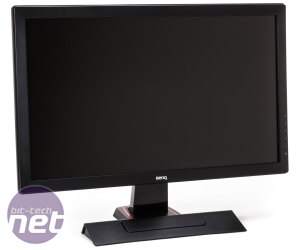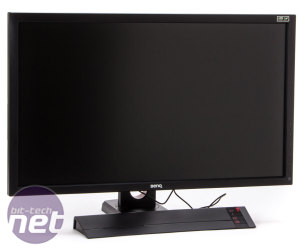
Motion Blur
Motion blur is the perceived lack of sharpness when pixels change colours to illustrate on-screen movement. This is actually caused by the way an LCD display works: pixels are lit continuously, as opposed to the ones in a CRT display, where they are ‘refreshed’ at a certain interval. The momentary drop in brightness in between CRT refreshes allows us to perceive movement as a ‘smooth’ motion. This is not the case with LCD, where even the fastest model has motion blur issues.This is why manufacturers have taken to attempting to simulate the black intervals of CRTs by rapidly switching the backlight on and off. This in turn requires a far higher brightness of the backlight, as the picture is displayed only part of the time. The same applies to active 3D displays, where the screen alternates between showing an image for the left eye and one for the right eye. Not by coincidence, Nvidia’s ‘3D Lightboost’ feature from its active 3D Vision 2.0 technology has been hijacked by enterprising enthusiasts utilizing it to crank up the brightness and enable backlight blanking while displaying 2D content. BenQ implements a similar technology that works out of the box. Neither is perfect, but both do markedly reduce motion blur, although we should add that not everyone is equally sensitive to the phenomenon.
Ghosting
Ghosting is the phenomenon where the display lags behind the input signal: it is still busy finishing up one pixel transition when the next one is already being processed and displayed. The result: a ‘trail’ behind moving objects or objects that move relative to the viewer’s perspective. A truly ‘fast’ screen won’t suffer this problem, and a quick calculation will tell you that about 16ms suffices to display 60 images per second. Generally this amount is held to be the maximum allowed time for a double transition: rise (dark to light) and fall (back to dark again) combined. Any screen that manages the transition within 16 ms is fast enough. For 120Hz screens, a panel that is twice as fast is obviously needed. Generally speaking, a response time of 10ms is great and below 5ms is superb.The 1 or 2ms values proclaimed by the various brands are in practice useless to base any purchasing decision on – they refer to transitions between colours specifically selected to obtain a low value, which tend to have nothing in common with how a screen is used in reality.
Overdrive
A cheap way for manufacturers to obtain faster response times is overdrive, a generic name for a collection of techniques that basically all do the same thing: apply a higher voltage to a pixel, driving it to change colour faster, at the expense of colour accuracy. Rather than reach, say, a value of 237 immediately, first a value of 255 is reached, after which it ‘falls’ back to the intended 237. In moderation, this technique is both cheap (compared to a truly fast panel) as well as effective. However, taken to extremes, overdrive can cause visual artefacts that are as annoying as the image ghosting it is meant to prevent. This phenomenon, overshoot, will present as black or white trailing outlines around moving objects. For this reason, it is worthwhile to fiddle with the overdrive settings if they offer more than a simple on/off toggle. Usually, the maximum setting should be avoided; a combined rise/fall response time of 18ms with barely visible ghosting is to be preferred over 4ms response time with extreme artefacting, for example.
MSI MPG Velox 100R Chassis Review
October 14 2021 | 15:04












Want to comment? Please log in.